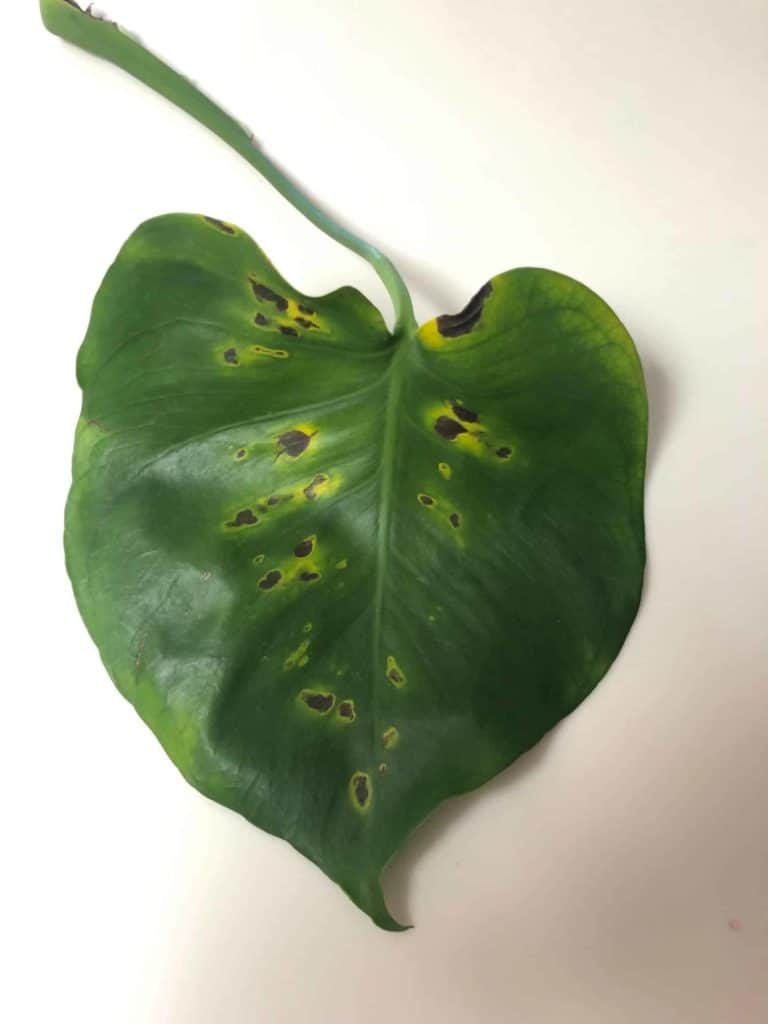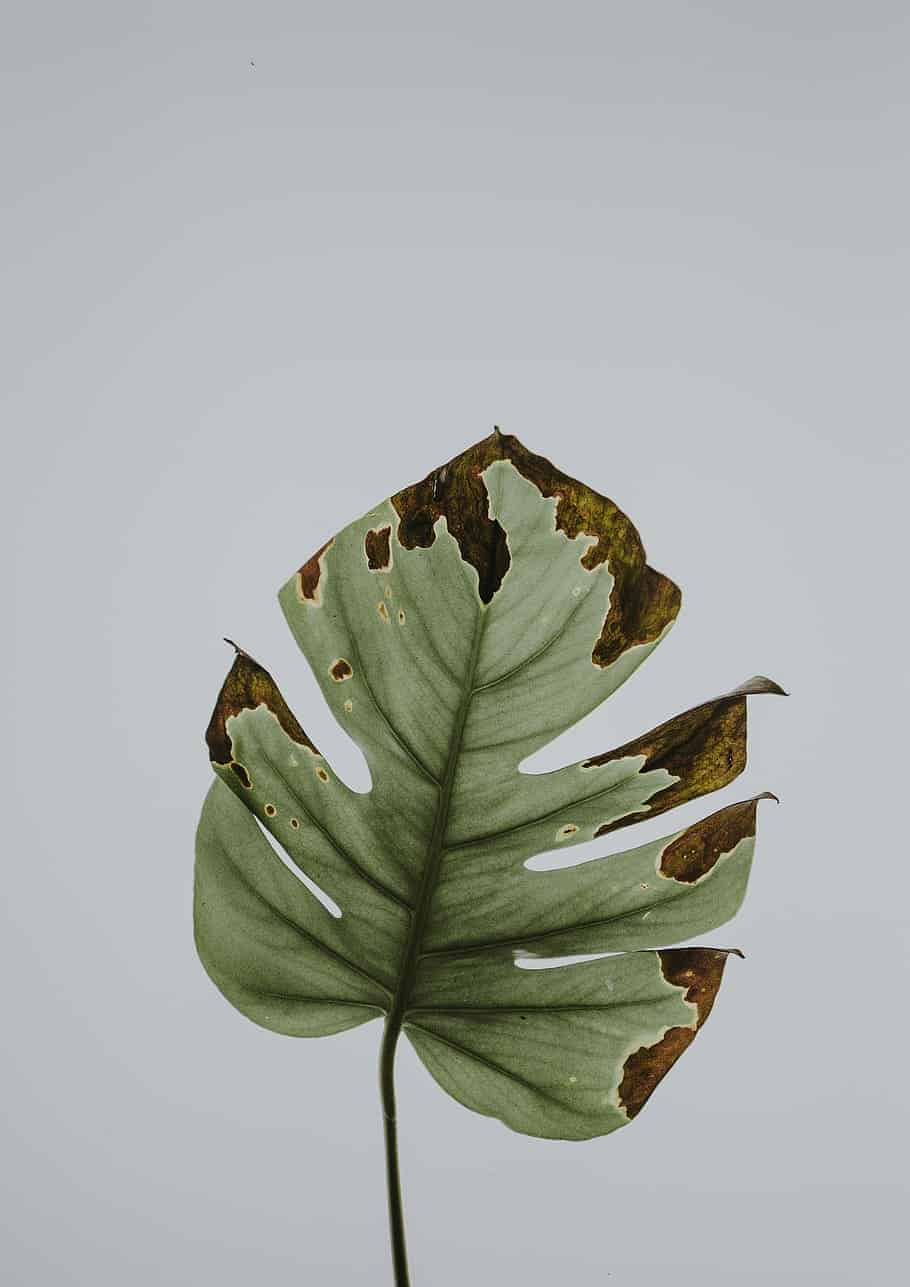Root rot.
Those words strike fear into the heart of every houseplant owner.
Like all plants, monsteras are susceptible to root rot from over-watering, but luckily, this condition is treatable if caught early and doesn't have to spell doom for your plant! Here's everything you need to know about root rot in monsteras.
Table of Contents
What is root rot and how do you prevent it?
First of all, let's talk about what root rot is and how to avoid it.
Root rot is exactly what it sounds like: when your plant's roots begin to rot due to sitting in water for too long. Dark, damp conditions like wet soil is the perfect environment for fungus and bacterial to grow, which can cause your roots to rot.
The best way to avoid this is to simply avoid over-watering your monstera. This means watering ONLY when the top 2 inches of soil are dry to the touch. Then slowly add water to the soil until it starts to drain out the bottom.
Read our ultimate guide on watering your monstera here!
However, there's more to this than how much water you give your monstera. The other factors that can foster over-watering are light and drainage.
Make sure your monstera gets plenty of bright, indirect sunlight so the plant can use water efficiently and so the soil can dry out as it should. Think about it, if you wanted to hang a wet shirt to dry, you probably wouldn't do it in a cold, dark room, right? You'd probably hang it in a warm, dry, bright place. It's the same with soil!
Also, make sure your pot has drainage and that your soil drains well. When you water, you should see some running out the bottom. If not, you might want to find a pot with more drainage holes or find a better soil. We recommend our very own premium potting soil.
One more thing: a monstera may need less water when the weather gets cooler, so you might not need to give it the same amount of water in the winter as you do in the heat of summer. Keep that in mind!
How to Diagnose Root Rot in Monsteras
If your monstera has root rot, the first place you'll see it is in the leaves. You'll notice dark brown to black spots on the lower leaves because they're the first to absorb the excess water and any fungus or bacterial that has infected the roots.

You'll also notice wet soil, and if you remove your monstera from the pot, you'll probably find mushy, dark, smelly roots. Yuck!
How to Treat Root Rot in Monsteras
"Great. My monstera has root rot. Now what do I do?"
Don't panic! Monsteras are resilient plants and root rot is very treatable. Here's what to do:
Repot
The first thing you want to do is get your monstera out of the wet, nasty soil. Carefully remove your monstera from the pot (you might need a friend to help you) and rinse as much of the soil off the roots as you can. If you see any rotting roots, carefully trim those away.
Then repot the plant into fresh soil in a clean pot with good drainage. (You can get a new one or clean the old one.)
Read our article on how to repot your monstera.
Prune the affected leaves
Since root rot is usually a fungal problem, you'll want to remove the affected leaves so the infection doesn't spread. This also gets rid of those ugly brown spots.
Luckily, monsteras respond well to pruning!
To prune your monstera, wear gloves to protect your hands and use clean, sharp pruning shears or a sharp knife to remove the leaf at the stem. Then throw the leaves in the trash and take it out immediately so the pathogens don't spread to your other plants! (And whatever you do, don't compost the leaves!)
Learn more about pruning your monstera here.
Put it in bright, indirect sunlight
After repotting and pruning, place your monstera back in bright, indirect sunlight so it can adjust and heal. If you think a lack of light might have contributed to the root rot problem, you might want to move it closer to a window or supplement with a grow light like this one so the problem doesn't happen again!
Use our root rot treatment
Go a little easier on the water for the first few weeks after treating your plant for root rot, but when you do water, make sure to use our root rot treatment to help the roots heal and prevent the rot from returning!
Root rot can also spread from plant to plant thanks to airborne bacteria and fungal spores, so it's not a bad idea to use this treatment on your other plants as well.
Learn more about root rot treatment here.
To help protect against bacteria, try our Houseplant Leaf Armor, which also protects against insects and fungus. (As an added bonus, it cleans and adds shine to your monstera's leaves!)
Catch it early
Your plant stands the best chance of survival if you prevent root rot and catch problems early, so take measures to prevent this condition and watch your monstera closely for signs of infection.
Root rot will be no match for you!
To learn more:
- Sign up for our free Ultimate Monstera Webinar.
- Subscribe to our newsletter.
- Click to join our community on Facebook: Monstera Plant Resource Group.
- Read our Ultimate Monstera Watering Guide here.
- Be sure to grab your essentials here: Monstera Plant Food, 3-in-1 Moisture Meter, Premium Potting Soil, Houseplant Leaf Armor (which protects your houseplant from bacteria, fungus, and insects—and also cleans and adds shine to its leaves!)





